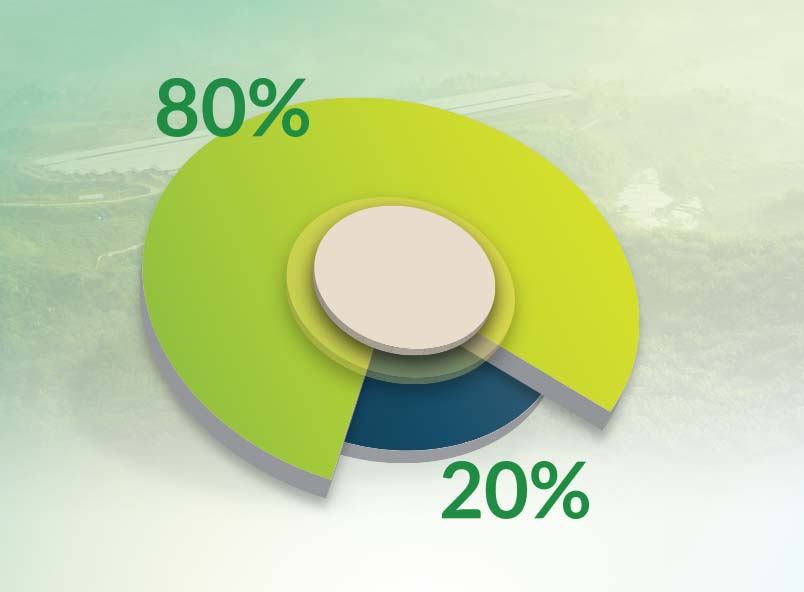



The Pareto Law, also known as the 80/20 principle, is useful in the planning of marketing strategies. Essentially, it states that 80% of the results will be derived from 20% of the input. For example, 80% of company profits will be generated by 20% of the products, or 80% of sales will come from 20% of the premium customers.
The Pareto Law was developed by Vilfredo Pareto of the University of Lausanne in 1896. In his first paper, he stated that 80% of the land in Italy belongs to 20% of the population. He then carried out a survey in other countries and observed a similar distribution.
Business managers are increasingly making use of the Pareto Law to analyse the impact of their marketing budget, sales distribution, customer complaints, feedback and service plans.
The Pareto Law also has a place in daily plantation operations, with everyone from the general manager to the agronomist being able to apply it to their area of work. These are some rules of thumb:

Reasons to apply the principle
Senior planters may be dubious about such measures. They may have many questions – particularly about the recommendation to target 20% of any area of plantation management in order to improve overall results. To view the situation holistically, we have to understand the evolution of plantation management.
During the mechanical era, new machinery and equipment were developed. The chemical revolution resulted in improved fertilisers and crop protection products. The biogenetic revolution saw the promotion of biogenetic annual crop seeds with better yield.
We are now experiencing the fourth agricultural revolution, involving the Internet of Things. Agricultural start-ups are looking at new concepts such as using sensors to capture basic raw data (moisture, rainfall and sunshine duration) to predict the yield, with complex logarithm programming for annual crops. Unmanned robotic tractors to Unmanned Aerial Vehicles are used to carry out spraying, manuring, census and mapping using hyper-spectral cameras.
In order to act quickly and correctly within a limited time-frame – while coping with acute labour constraints – we have to rely on emerging technology tools like intelligent software, logarithm studies, distribution patterns or big data management.
The 80/20 principle is a simple mathematical distribution model that is capable of capturing data for many years to come. Applying the Pareto Law in daily operations will also enable productive use of time toward efficient and effective management of plantations.
Devarajen Rajagopal
Developer, Oil Palm Pesticides Calculator